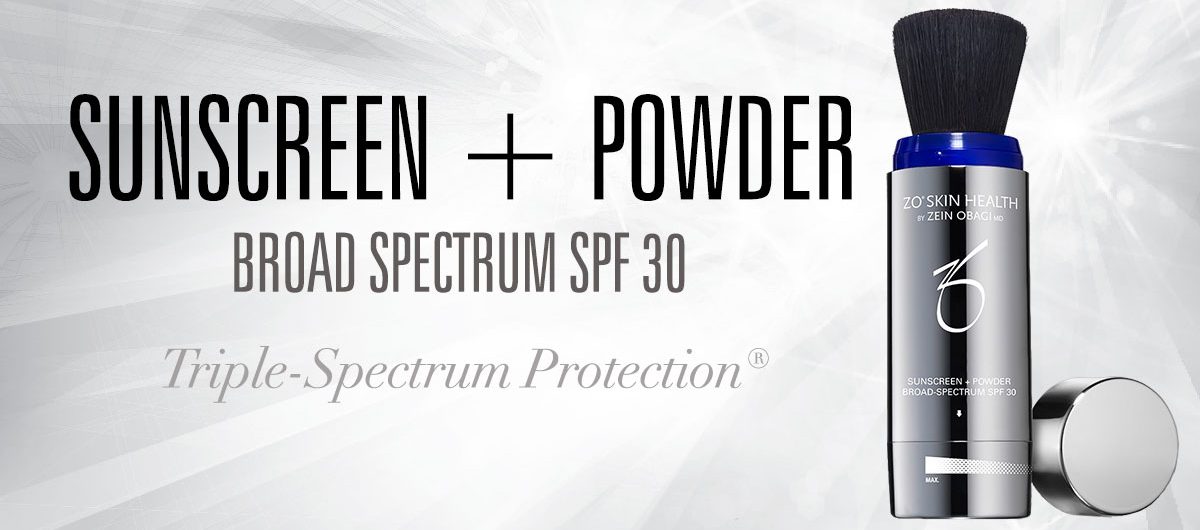Good question! Here’s skin expert Dr Lorraine Hill’s answer… it might just save your skin!
UVB in the summer Burns our skin.
UVA comes through the window on a cloudy winter’s day and Ages us.
Then we have HEV light, this is blue light emitted from our screens and indoor lighting, this breaks down our subcutaneous fat.
Infrared-A light comes from the sun and penetrates much more deeply into the skin doing further damage to our collagen and elastin.
Light exposure results in damage to the surface skin cells (epidermis), leading to irregularities and a breakdown in the skin barrier function. There is stimulation of pigment cells resulting in irregular pigmentation, and oil glands which enlarge, in addition to damage of our collagen and elastin.
ZO sunscreens offer superior protection by guarding us from not only UVA and UVB, but also HEV and IR-A light. They all contain fractionated melanin which forms an umbrella on the surface of the skin protecting against HEV light. They combine protection from harmful rays with many other benefits: 12hour slow release antioxidant protection to neutralize free radicals which cause oxidative stress, hydrators and moisture replenishers which restores lipids, maintaining hydration and strengthening our skin barrier, enhanced DNA repair and protection, anti-redness inhibitors and they are fortified with vit c to inhibit pigment formation.
There are two types of sun protection, you have chemical sunscreens and physical sunscreens. A chemical sunscreen absorbs UV rays and converts it to heat, releasing it from the skin surface before it penetrates and causes damage.
Physical sunscreen contains Titanium dioxide and Zinc oxide which rests on top of the skin, scattering and reflecting light. Physical sunscreens are better if you have sensitive skin or post-procedures.
In the ZO range there are 2 physical sunscreens and 2 chemical SPFs, two of which are tinted.
Chemical
Smart Tone SPF 50: Rich and hydrating, tinted-changes colour according to the tone of your skin.
Daily Sheer SPF 50: Clear, non-greasy lightweight sunscreen leaving a translucent matt finish. Water resistant.
Physical
Broad spectrum SPF50: Ideal for post-procedure, sensitive skin, or severe pigmentation issues.
Sunscreen and Primer SPF 30: This product doubles up as an SPF and Primer. It has a universal tint that leaves a silky matt finish. Perfect for oily and acne prone skin.
Sunscreen and Powder SPF30: The latest in the triple spectrum protection range, is enriched with Vitamins A, C and E for anti-oxidant protection. It has oil-absorbing properties to minimise shine and retain hydration and provide buildable coverage with an airbrushed finish. In 3 colours, light to neutralise redness and irritation, medium for a sheer base and deep for adding warmth and a bronzed look.
So, wearing SPF of at least 30+ every day of the year with slow down the ageing process, and maintain a healthy complexion.
Most people know that SPF stands for sun protection factor-measuring the protection from UVB rays responsible for burning the skin.
However, it is also essential to be aware of a sunscreen’s PPD (persistent pigment darkening) level too, for all-round skin health. The PPD level measures the protection from UVA rays, which are responsible for ageing. PPD values are not measured as precisely as SPF numbers (they are also known as PA and come with a + sign). In fact, there is no standardized system for determining them, so there is some ambiguity in their measurement, however the higher the PPD number or the more +, the better the protection against UVA.
Find your perfect SPF match with a FREE consultation with Dr Hill.
Your skin will thank you for it! ❤️

Connect with us